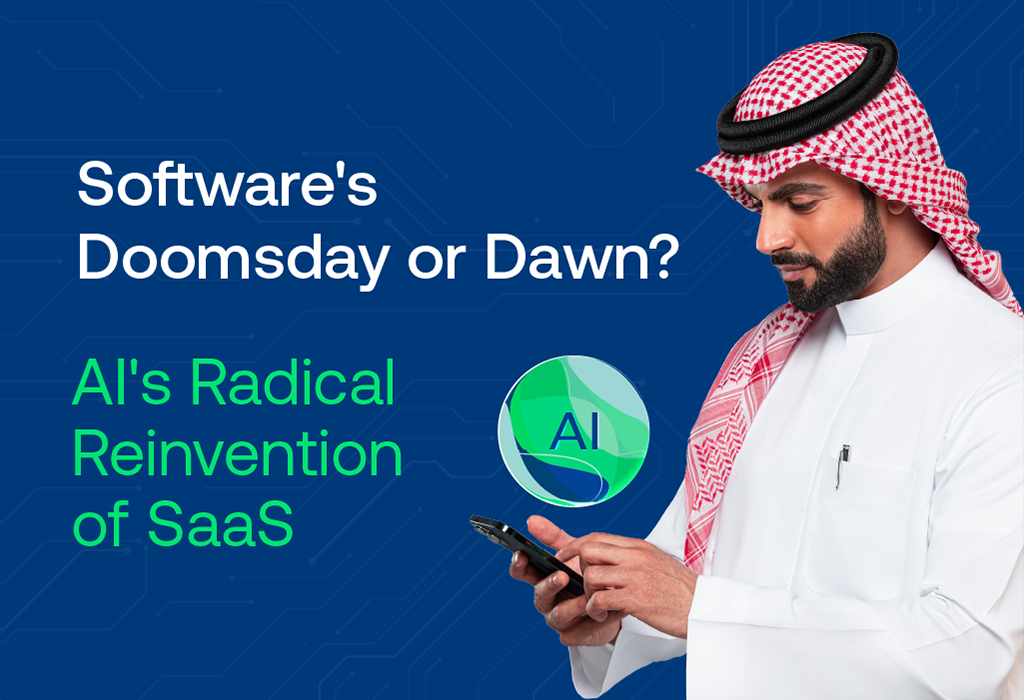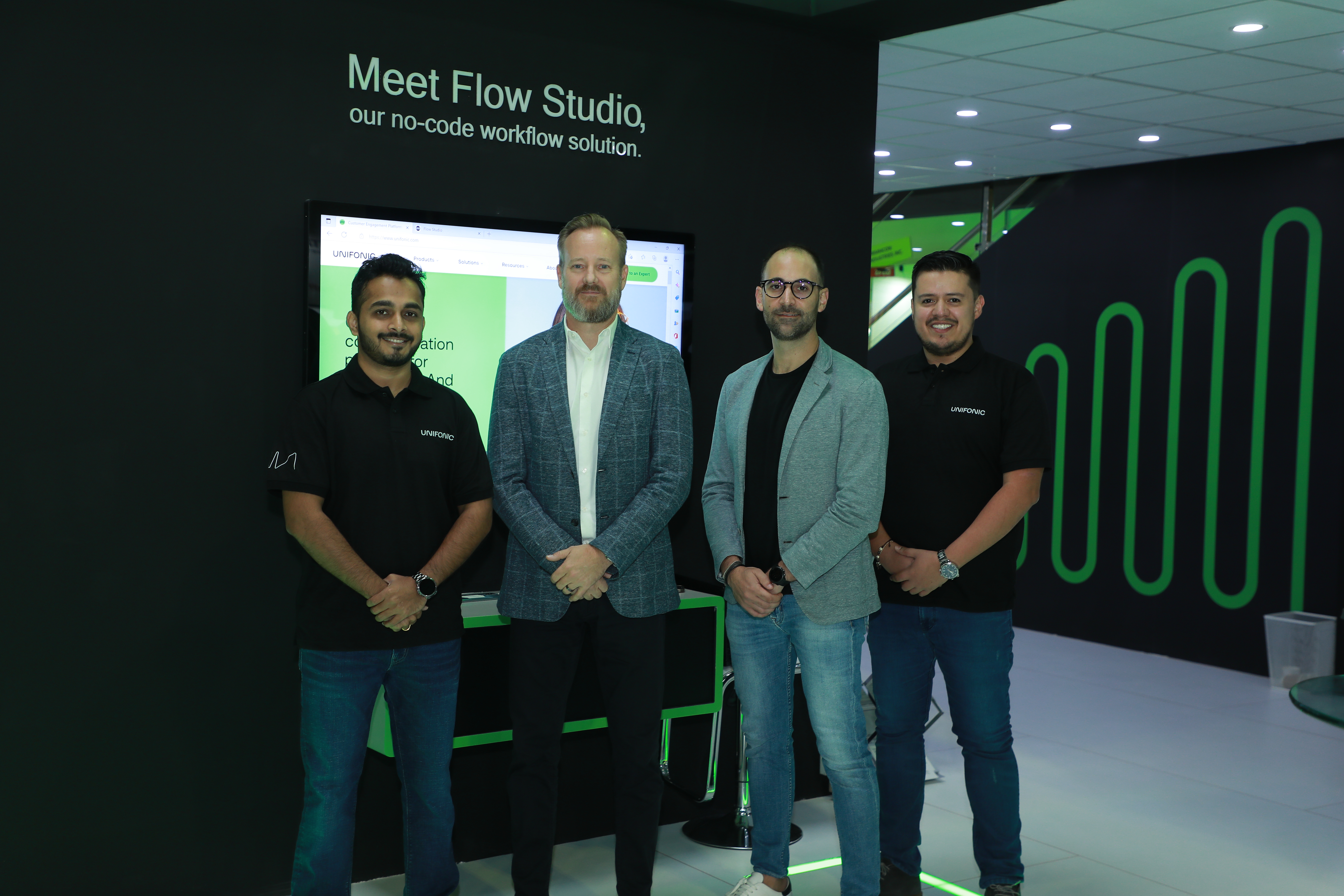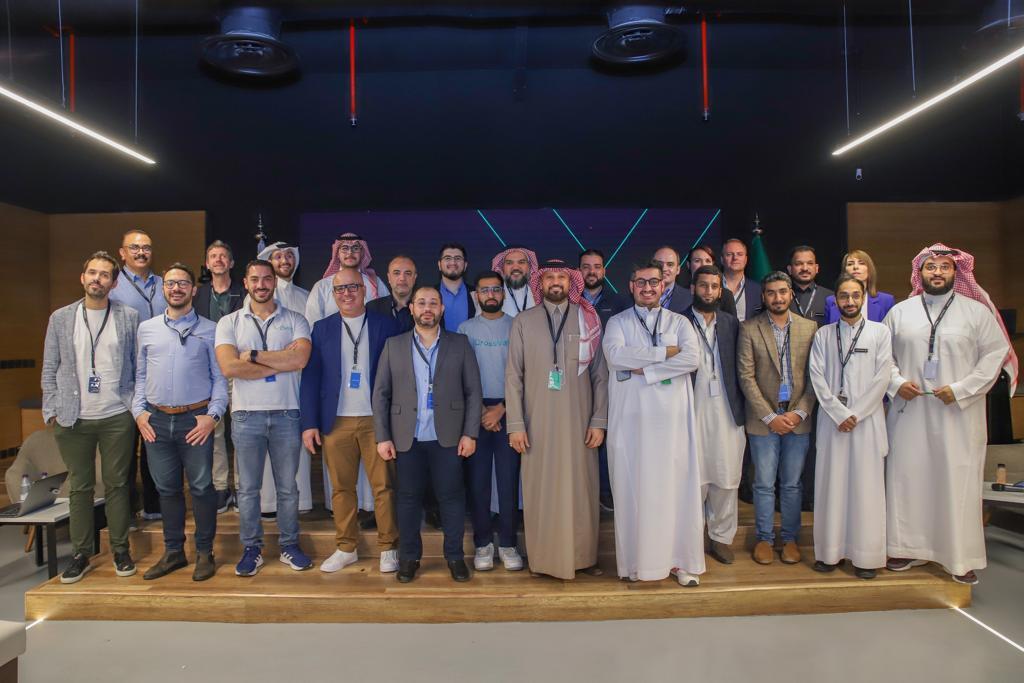Software's Doomsday or Dawn? AI's Radical Reinvention of SaaS
Software's Doomsday or Dawn? AI's Radical Reinvention of SaaS

Is the rise of AI putting Software as a Service (SaaS) on life support, or is it catapulting it to new heights? The answer seems to depend on where you're standing. If you tune into the global tech conversation, you'll hear a
pessimistic narrative. Many commentators are predicting that AI will be the death knell for SaaS as we know it. This pessimism isn't just talk – SaaS Multiples have collapsed to 5.2 times revenue, well below COVID and even
pre-COVID levels.
.jpg?width=1951&height=1059&name=UNIFONIC%20(1).jpg)
Yet, in the Middle East and North Africa (MENA) region and other emerging tech markets, SaaS is one of the hottest startup categories, with founders and investors buzzing with excitement.
.jpg?width=1794&height=1325&name=UNIFONIC%20(2).jpg)
How can these conflicting narratives be reconciled? If SaaS is truly on its last legs globally, what does this mean for regions like MENA that are just beginning to build their software ecosystems? And perhaps most intriguingly,
could the rise of AI in software development present an unprecedented opportunity for these emerging tech hubs?
Why AI Might Kill SaaS – And Why It Won't
While cyclical factors like spending shifts from "traditional software" to AI pilots, longer sales cycles, and high interest rates explain part of the cooling SaaS sentiment, two fundamental arguments make a more existential case against the future of SaaS.
The AI Swiss Army Knife: One Tool to Rule Them All?
The first argument suggests that general AI systems will become so proficient at a wide array of tasks that they will effectively replace specialized SaaS applications that leverage AI. This isn't just about raw capabilities. The intuitive, conversational interface of AI Systems could make traditional SaaS feel clunky and tedious by comparison.
However, the software industry has long alternated between specialized solutions and broader, bundled offerings for good reason. While all-encompassing AI systems have their merits, specialized offerings that effectively integrate cutting-edge AI will retain distinct advantages:
- User Experience: The Power of Less: Simplicity often trumps all-encompassing complexity. Many "super apps" fail because user experiences that try to do everything often excel at nothing.
- Hybrid User Interface Advantage: Natural language isn't the gold standard for all interactions. The future likely combines natural language with purpose-built graphical interfaces, a mix that specialized SaaS products are uniquely positioned to offer. For example, Sestek, a conversational AI company, demonstrates this by blending domain-specific user interfaces with natural language interactions in customer service, thereby optimizing agent support.
- Power of Targeted Solutions: Businesses prefer targeted solutions to vague, all-encompassing promises. SaaS products excel at addressing specific pain points.
- Domain-Specific Edge: Effective AI solutions require more than advanced models. Domain-specific data and integrations are equally crucial. Specialized software solutions powered by AI have the upper hand here, particularly in areas not prioritized by general-purpose AI systems.
The Commoditization of Software: Can SaaS Escape the Fate of Media?
Chris Paik from Pace Capital presented a second fundamental argument against a thriving software ecosystem in his piece "The End of Software". He contends that AI will drive software creation costs to near zero, commoditizing the industry and eroding companies' ability to charge premium prices much like the internet did with media. Paik envisions software companies being replaced by AI-powered "platforms" that dynamically solve customer problems.
While thought-provoking, this argument misses key factors that will allow SaaS companies to thrive in an AI-driven world:
- Beyond Cost: The True Drivers of Software Pricing: Software pricing is determined by the value it creates, not production costs. Like premium media content, businesses will pay for SaaS products that solve real problems effectively and create tangible value in a differentiated manner.
- Enduring Differentiators and Moats: Even if software development becomes commoditized, SaaS companies can still differentiate through superior product management, user experience, system architecture, and data science. Traditional software moats like deep integrations, network effects, unique datasets, customer relationships, localization, and brand trust will persist, especially in enterprise software.
These differentiators and moats will allow specialized software companies to coexist with hyperscalers and large platforms. The software industry has long adapted to the presence of these larger players by being nimbler, faster, and by offering specialized solutions that larger entities can't or won't provide. This dynamic won't change in the era of AI.
The AI-Powered SaaS Revolution: Adapt, Innovate, or Fade Away
While software isn't dying, it's poised for a revolutionary transformation. AI isn't just another tool; it's a catalyst that will fundamentally reshape the entire software industry. While this transformation may spell doom for laggards, it presents an unprecedented opportunity for agile players willing to reinvent themselves.
This revolution goes beyond merely enhancing existing software solutions. Through cutting-edge AI capabilities, SaaS companies are poised to tackle entirely new challenges cost-effectively, penetrating markets previously untouched by software. Take the legal sector, for instance. The US has seen a proliferation of AI-powered legal software companies, with dozens of startups tackling various aspects of legal work.
.jpg?width=1951&height=1056&name=UNIFONIC%20(3).jpg)
This trend isn't limited to the US. In the UAE, Specter is differentiating itself by using local templates and legal datasets to improve accuracy and relevance in the Middle Eastern context. This approach demonstrates how SaaS companies can create significant value through regional specialization, even in a globally competitive market.
The transformation extends to business models as well. We're witnessing a shift from user and seat-based pricing models to more dynamic pricing structures based on usage and outcomes. This evolution allows software companies to align their revenue more closely with the actual value they create, opening up new avenues for growth and customer satisfaction.
Perhaps most thrilling is the democratization of software development. AI is lowering entry barriers across the globe, potentially igniting a new wave of SaaS entrepreneurship in regions traditionally underserved by the tech industry.
The Great Equalizer: AI's Promise for Emerging SaaS Ecosystems
The Middle East, like many emerging tech markets, is experiencing impressive growth but still grapples with building a robust software ecosystem. However, the advent of AI-powered development tools and end-to-end software agents could be a great equalizer and the catalyst for a transformative leap.
These AI-powered tools, which assist with code generation, bug detection, and automated testing, are lowering entry barriers across the globe. They enable Middle Eastern entrepreneurs and businesses to prototype, develop, and deploy sophisticated SaaS solutions with smaller, more focused teams of software developers. While not a silver bullet, this technological democratization will allow Middle Eastern companies to compete more easily on a global scale.
To be clear, software development is not the only skill gap emerging software ecosystems need to address. To fully capitalize on the opportunity ahead, the focus must shift from traditional coding to a broader set of critical competencies:
- Strategic Product Management: Understanding user needs, prioritizing features, and crafting intuitive experiences become paramount.
- AI-Augmented Engineering: The emphasis moves towards system design, AI/ML integrations, and effective collaboration with and oversight of AI systems.
- Data Science and Analytics: As AI drives more decision-making, the ability to work with and interpret data becomes crucial.
Future software professionals must evolve from code writers to strategic architects, excelling at conceptualizing needs and solutions and orchestrating AI to bring innovative ideas to life. They'll need to become adept at using AI-powered development tools as force multipliers, allowing them to compete effectively in the global SaaS market.
We should focus on fostering these skills through education initiatives, startup incubators, and public-private partnerships. Creating a supportive ecosystem for AI-driven SaaS innovation, including access to and training on cutting-edge AI tools, could position the Middle East as a future hub for global SaaS development.
Conclusion: The Dawn of the AI-Powered SaaS Era
SaaS isn't dying – it's changing and it's changing fast.
The past couple of years saw AI Core infrastructure providers reaping the initial benefits of the AI revolution. As recent developer conferences from Apple and Microsoft have shown, we're now entering the Edge AI phase, with AI-powered smartphones and PCs on the horizon. However, we're approaching another inflection point. The coming years will witness a significant shift towards the AI Software Applications phase, with increasing value accruing to the software layer. This integration of AI into SaaS is not just an incremental change; it's catalyzing a new era of innovation, promising software solutions that are more efficient, intelligent, and accessible than ever before.
.jpg?width=1931&height=1097&name=UNIFONIC%20(4).jpg)
Equally excitingly, this evolution could democratize software development on a global scale, allowing regions like the Middle East to more easily become major players in the SaaS economy.
The future of SaaS is AI-driven, globally distributed, and brimming with potential. It's time to embrace this change and shape the next generation of software solutions. The AI SaaS revolution is just beginning – and this time, everyone's invited.
Related articles
.jpeg)
02 September 2024
Beyond the Buzz: Strategic AI for Business Leaders
Read more

11 October 2022
Unifonic now integrates with over 80 business systems to automate customer journeys.
Read more

02 March 2023
UnifonicX SaaS Accelerator Program Empowers Start-ups with Three Months of Business-Focused Training, Culminating in Demo Day
Read more

